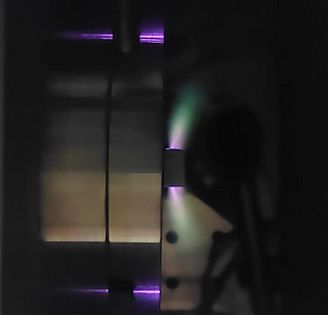Attosecond physics facts for kids

Attosecond physics, also known as attophysics, or more generally attosecond science, is a branch of physics that deals with light-matter interaction phenomena wherein attosecond (10−18 s) photon pulses are used to unravel dynamical processes in matter with unprecedented time resolution.
Attosecond science mainly employs pump–probe spectroscopic methods to investigate the physical process of interest. Due to the complexity of this field of study, it generally requires a synergistic interplay between state-of-the-art experimental setup and advanced theoretical tools to interpret the data collected from attosecond experiments.
The main interests of attosecond physics are:
- Atomic physics: investigation of electron correlation effects, photo-emission delay and ionization tunneling.
- Molecular physics and molecular chemistry: role of electronic motion in molecular excited states (e.g. charge-transfer processes), light-induced photo-fragmentation, and light-induced electron transfer processes.
- Solid-state physics: investigation of exciton dynamics in advanced 2D materials, petahertz charge carrier motion in solids, spin dynamics in ferromagnetic materials.
One of the primary goals of attosecond science is to provide advanced insights into the quantum dynamics of electrons in atoms, molecules and solids with the long-term challenge of achieving real-time control of the electron motion in matter.
The current world record for the shortest light-pulse generated by human technology is 43 as.
In 2022, Anne L'Huillier, Paul Corkum, Ferenc Krausz were awarded with the Wolf prize in physics for their pioneering contributions to ultrafast laser science and attosecond physics.
In 2023, Pierre Agostini, Ferenc Krausz and Anne L'Huillier were awarded with the Nobel Prize in Physics with the motivation: “for experimental methods that generate attosecond pulses of light for the study of electron dynamics in matter.”
See also
 In Spanish: Attofísica para niños
In Spanish: Attofísica para niños
- High harmonic generation
- Femtochemistry
- Femtotechnology
- Ultrashort pulse
- Chirped pulse amplification
- Free-electron laser
- Attosecond chronoscopy

